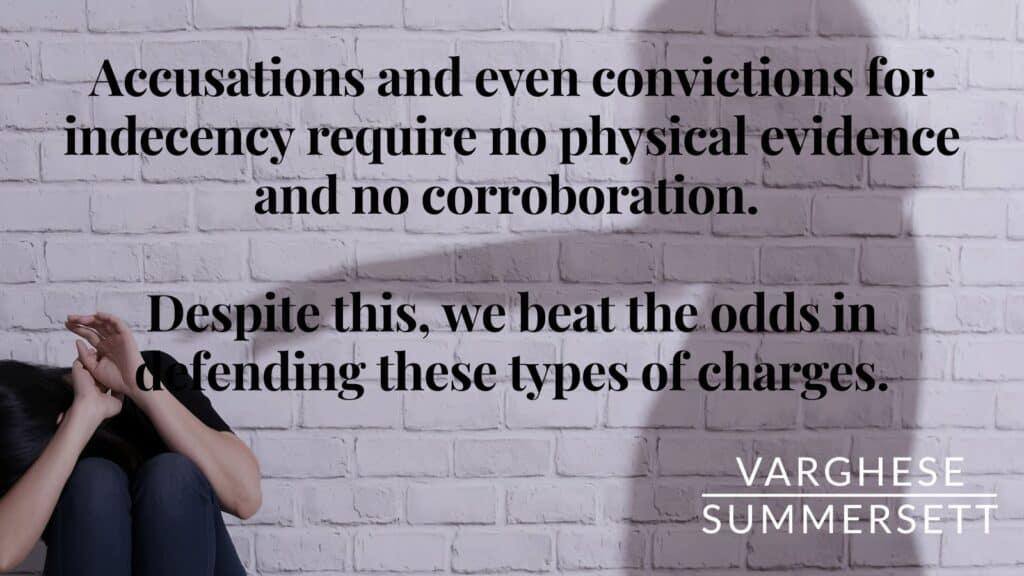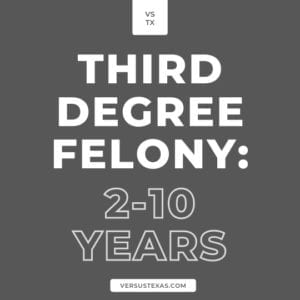Indecency With A Child By Exposure Texas Penal Code 21.11
Indecency with a Child in Texas
Indecency with a Child is a serious felony offense in Texas. It can be found in Texas Penal Code Section 21.11, which covers both Indecency with a Child by Exposure and Indecency with a Child by Contact.
Who is a minor in Texas for purposes of Indecency with a Child?
A child is someone under the age of 17 in Texas. Texas law allows accusations of Indecency with a Child to be brought without any evidence the accused knew the age of the alleged victim.
What’s the difference between Indecency with a Child by Contact and Indecency with a Child by Exposure in Texas?
| Indecency by Contact | Indecency by Exposure | |
| Mental State | Intent to gratify the sexual desire of any person | Intent to gratify the sexual desire of any person |
| Act | The person sexually contacts, or causes the minor to contact them sexually | Exposure of the anus or genitals to the minor, or of the minor |
| Includes | Touching through the clothing of breast, anus, or genitals | Exposure of any part of the genitals |
| Punishment | 2-20 years and up to $10,000 fine | 2-10 years and up to $10,000 fine |
| Does Not Require | Penetration of any type | Contact of any type |
| Does Not Require | Physical evidence, or any other witness | Physical evidence, or any other witness |
| Offense Level | Second Degree | Third Degree |
| Sex Offender Registration | Lifetime | 10 years |
What is considered indecency with a child?
Any exposure of the anus or genitals to or of a minor for sexual gratification is indecency by exposure. Any contact with or to the anus, genitals, or breast of a minor that is not penetration (which would be sexual assault) for sexual gratification is indecency by contact in Texas. This is also referred to as Indecency-Fondling.

What’s the difference between indecency with a child by exposure, indecent exposure, and disorderly conduct for exposure?
Under Texas law, the definitions of “indecent exposure,” “indecency with a child by exposure,” and “disorderly conduct” share similar elements involving exposure of the genitals or anus, but they differ significantly in their specifics, intended audience, and legal consequences. Here’s a breakdown of each offense according to Texas Penal Code and their respective implications, including potential punishment and sex offender registration requirements.
| Offense | Definition | Punishment Range | Sex Offender Registration Required |
|---|---|---|---|
| Indecent Exposure | Under Penal Code §21.08, involves intentionally or knowingly exposing one’s genitals intending to arouse or gratify sexual desire, done recklessly about whether another person present will be offended or alarmed. | Class B misdemeanor, which generally involves up to 180 days in a county jail and/or a fine up to $2,000. | No, unless the individual has prior convictions for sex offenses. |
| Indecency with a Child by Exposure | Under Penal Code §21.11(a)(2), involves exposing one’s genitals or anus to a child under 17 years of age with intent to arouse or gratify the sexual desire of any person, including the actor, and being reckless about whether the child is present and seeing. | Third-degree felony, punishable by 2 to 10 years in prison and/or a fine up to $10,000. | Yes, this offense requires registration as a sex offender. |
| Disorderly Conduct (Exposure) | Under Penal Code §42.01(10), involves exposing one’s anus or genitals in a public place and being reckless about whether another may be present who will be offended or alarmed by the act. This statute typically captures behavior that is offensive but less sexually motivated compared to indecent exposure. | Class C misdemeanor, generally punishable by a fine not exceeding $500. | No, not typically required for disorderly conduct offenses. |
Examples to Highlight the Differences
Here is a look at some examples of behaviors and how they are most likely to be classified:
| Scenario | Most Likely Offense | Reason |
|---|---|---|
| Public Urination | Disorderly Conduct (Exposure) | Typically involves exposure but generally lacks the intent to arouse or gratify sexual desire. Considered a nuisance more than a sexually motivated act. |
| Masturbating in Public | Indecent Exposure | Clearly involves exposing genitals with the intent to arouse or gratify sexual desire, conducted in a public setting where others may be offended or alarmed. |
| Changing Clothes in Public | Disorderly Conduct (Exposure) | While it involves public exposure, it’s usually non-sexual in nature. Context like intent or location could shift this classification. |
| Streaking | Indecent Exposure | Involves the intentional and reckless exposure of genitals, often with a non-sexual intent like humor or protest, but still meets criteria for indecent exposure. |
| Flashing | Indecent Exposure | Deliberate exposure of genitals usually with the intent to shock or offend, which aligns with the elements of indecent exposure. |
Key Differences between Indecent Exposure, Indecency with a Child by Exposure, and Disorderly Conduct (Exposure)
- Intent and Context: Indecent exposure requires the intent to arouse or gratify sexual desire, making it more serious than disorderly conduct, which might not involve sexual intent. Indecency with a child by exposure specifically targets acts done in the presence of a minor, increasing its severity.
- Victim Consideration: Indecency with a child by exposure distinctly involves minors, which categorizes it as a more severe offense compared to the others that may involve adults or non-specific audiences.
- Legal Consequences: The punishment ranges reflect the seriousness of each offense, with indecency with a child by exposure carrying the harshest penalties due to the involvement of minors and the sexual nature of the offense.
- Sex Offender Registration: Only “indecency with a child by exposure” categorically requires sex offender registration due to its direct impact on minors and the nature of the crime, reflecting the intent to protect children from sexual exploitation.
What is the statute of limitations for indecency with a child in Texas?
There is no statute of limitations for Indecency by Contact or Indecency by Exposure in Texas.
How many years do you get for indecent exposure?
Indecency by Exposure is punishable by up to 10 years in prison.

Indecency by Contact is punishable by up to 20 years in prison.

Does Indecency with a Child require registration as a sex offender in Texas?
Yes. Indecency with a child by contact in Texas requires lifetime registration as a sex offender. Indecency with a child by exposure requires 10 years of registration as a sex offender.
Facing an Accusation of Indecency with a Child? Contact Us.
If you or a loved one is facing a child sex allegation, it’s imperative that you contact a skilled attorney who is skilled at handling these types of cases immediately. We can help. Our team has vast experience handling child sex allegations and a proven record of results. Call today for a free consultation. (817) 203-2220.


